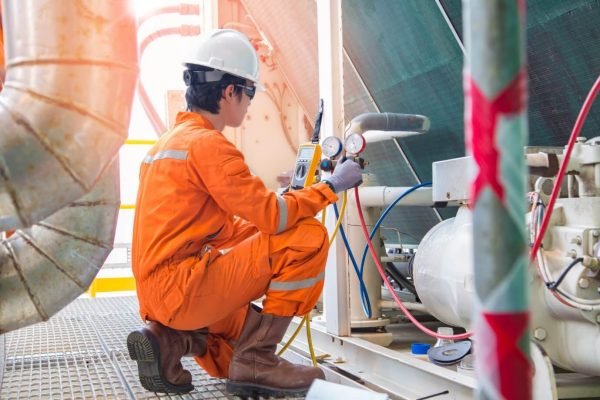The revolution of high-speed Internet has had a huge effect on everyday routine. It has made it possible for people to work from home as efficiently as possible, learn online, and even stream videos or music without them stopping or buffering in between. This means that having high-speed home internet is now something that is really important because it can help you do more things and have fun without getting annoyed due to slow speeds or bad quality pictures. Upgrading to this type of connection might make web pages load faster, upload files more quickly, or play video games seamlessly. If your household uses the internet a lot, it’s worth thinking about how many devices will be connected at once — if there are too many, you might need a faster connection.
Table of Contents
Choosing the Right Internet Speed for Your Needs
Determining the ideal internet speed depends on how many devices are connected in your household and your specific online activities:
100 Mbps
For households with up to 5 devices, 100 Mbps provides sufficient speed for various online activities. Whether you’re streaming your favorite shows, engaging in online gaming sessions, browsing social media, or downloading music, this speed ensures smooth performance without interruptions. It’s an excellent choice for smaller households or individuals prioritizing basic online tasks and entertainment.
300 Mbps
Ideal for homes with up to 12 devices, 300 Mbps offers faster download speeds. It is perfect for HD streaming, downloading large files, engaging in multiplayer gaming, and accommodating remote work or distance learning needs. With enhanced bandwidth, multiple users can enjoy high-definition content and maintain efficient online productivity without experiencing slowdowns.
1,000 Mbps
Designed for households with up to 15 devices, 1,000 Mbps home internet delivers lightning-fast download speeds that simultaneously support streaming in Ultra HD on multiple devices. It’s optimal for families or shared living spaces where several users engage in bandwidth-intensive activities like streaming 4K videos, conducting video conferences, and downloading large files quickly and effortlessly.
5,000 Mbps
5,000 Mbps provides professional gaming speeds and the fastest available downloads for users with unlimited devices and demanding internet requirements. This premium speed option ensures seamless performance for households with extensive online needs, offering robust connectivity for future-proof internet usage and enhanced digital experiences across all connected devices.
Choosing the Right Internet Connection for Your Home
Here’s a guide to different types of internet connections available, highlighting their speeds, reliability, and suitability for various home environments.
Fiber Internet: High-speed reliability
Fiber-optic Internet uses light signals through glass or plastic strands for superior speed and reliability. Offering up to 10 Gbps download speeds (commonly 1,000 to 5,000 Mbps), it boasts symmetrical upload/download speeds crucial for video calls and gaming. Despite higher costs (typically $100+ per month), fiber ensures minimal latency and consistent performance and is primarily available in urban areas.
Cable Internet: Widely Available
Accessible to nearly 90% of homes, cable home internet uses coaxial cables and often bundles with TV services. Speeds peak around 940 Mbps for downloads but have slower uploads (typically under 50 Mbps). It’s affordable, ranging from $30 to $40 per month, but it may experience speed fluctuations during peak usage.
5G Home Internet: Wireless Advancement
5G converts cellular signals into broadband connections, ideal for urban areas with robust cell infrastructure. Offers up to 1 Gbps with limited plan options (around $50 to $70 per month). It provides reliable connectivity without needing physical lines and is growing as a viable alternative.
Fixed Wireless Internet: Rural Connectivity
Using radio signals, fixed wireless bridge gaps in metro and rural areas with 5 to 50 Mbps speeds. Costs average around $50 per month with data caps (200-300GB), expanding access beyond traditional wired services, especially in underserved regions.
DSL Internet: Accessible and Affordable
DSL operates over copper phone lines, offering reliable speeds (typically 10-50 Mbps). Suitable for rural or underserved areas where cable/fiber isn’t available, it remains cost-effective and widely accessible, typically priced lower than cable internet.
Satellite Internet: Universal Coverage
Connecting via satellites in orbit, satellite internet serves remote areas globally. Speeds vary (12-100 Mbps), sufficient for basic online activities but prone to latency. It’s expensive, ranging from $60 to $200+ per month, plus additional equipment fees, making it a last resort for areas that have other options.
Conclusion
The correct internet connection depends on what your household requires and where it is located. Think about what you usually do on the internet – for example, you might only need to check emails or browse articles but sometimes you want to watch movies or play games online. It is a good idea to have speeds of at least 100 megabits per second (Mbps) so that all these activities can be done without any problems. However, this speed may cost more than slower connections. It’s also important to remember that not all areas have access to every type of high-speed internet. Rural locations are less likely than urban ones to have choices between different kinds of service.





